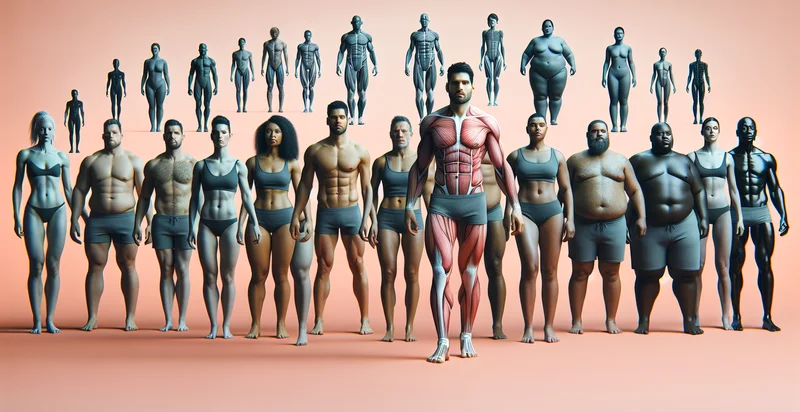Identify how ripped someone is
using AI
Below is a free classifier to identify how ripped someone is. Just upload your image, and our AI will predict how ripped someone is - in just seconds.

Contact us for API access
Or, use Nyckel to build highly-accurate custom classifiers in just minutes. No PhD required.
Get started
import nyckel
credentials = nyckel.Credentials("YOUR_CLIENT_ID", "YOUR_CLIENT_SECRET")
nyckel.invoke("how-ripped-someone-is", "your_image_url", credentials)
fetch('https://www.nyckel.com/v1/functions/how-ripped-someone-is/invoke', {
method: 'POST',
headers: {
'Authorization': 'Bearer ' + 'YOUR_BEARER_TOKEN',
'Content-Type': 'application/json',
},
body: JSON.stringify(
{"data": "your_image_url"}
)
})
.then(response => response.json())
.then(data => console.log(data));
curl -X POST \
-H "Content-Type: application/json" \
-H "Authorization: Bearer YOUR_BEARER_TOKEN" \
-d '{"data": "your_image_url"}' \
https://www.nyckel.com/v1/functions/how-ripped-someone-is/invoke
How this classifier works
To start, upload your image. Our AI tool will then predict how ripped someone is.
This pretrained image model uses a Nyckel-created dataset and has 6 labels, including Extremely Ripped, Moderately Ripped, Not Ripped, Quite Ripped, Slightly Ripped and Very Ripped.
We'll also show a confidence score (the higher the number, the more confident the AI model is around how ripped someone is).
Whether you're just curious or building how ripped someone is detection into your application, we hope our classifier proves helpful.
Related Classifiers
Need to identify how ripped someone is at scale?
Get API or Zapier access to this classifier for free. It's perfect for:
- Personal Fitness Assessment: This function can be used by fitness trainers and gyms to assess clients’ physical fitness levels based on their muscular definition. By classifying how "ripped" an individual is, trainers can customize workout plans and nutritional advice to help clients achieve their fitness goals more effectively.
- Virtual Fitness Challenges: Companies can implement this function in virtual fitness apps to create challenges that encourage users to achieve specific body transformation goals. By comparing images over time, participants can receive feedback on their progress, promoting engagement and motivation.
- Fitness Influencer Marketing: Brands can leverage this technology to assess potential fitness influencers. By analyzing the image data of influencers, companies can match their product endorsements with those who exhibit high levels of physical definition, ensuring an authentic representation of their products.
- Personalized Workout Programs: Health and fitness applications can utilize this function to recommend personalized training programs based on the user's muscle definition. By offering tailored routines aimed at enhancing muscle growth or fat loss, the application can improve user results and satisfaction.
- Fitness Social Media Analytics: Social media platforms focused on fitness content can use this function to categorize user-generated content. By identifying how "ripped" individuals are, the platform can tailor content recommendations, promote relevant influencers, and enhance community engagement.
- Market Research in Fitness Industry: Fitness brands can utilize this image classification function to analyze market trends. By assessing the physical appearance of competitors and target demographics, companies can adjust their marketing strategies, product offerings, and advertisements to better resonate with their audience.
- Corporate Wellness Programs: Businesses promoting corporate wellness initiatives could integrate this function to assess employee engagement and fitness levels. By tracking changes in muscular definition over time, companies can measure the effectiveness of their wellness programs and incentivize healthy behaviors among employees.


